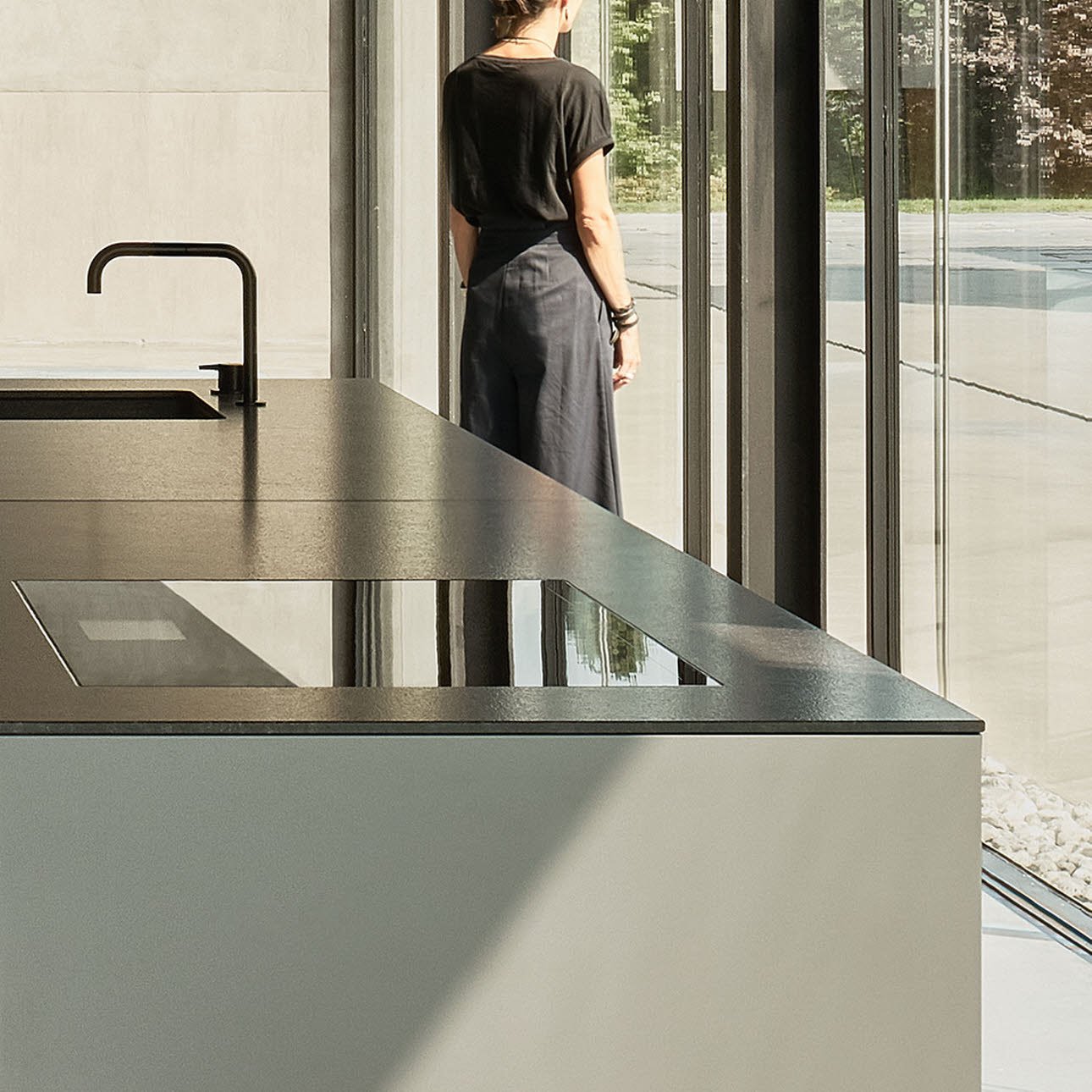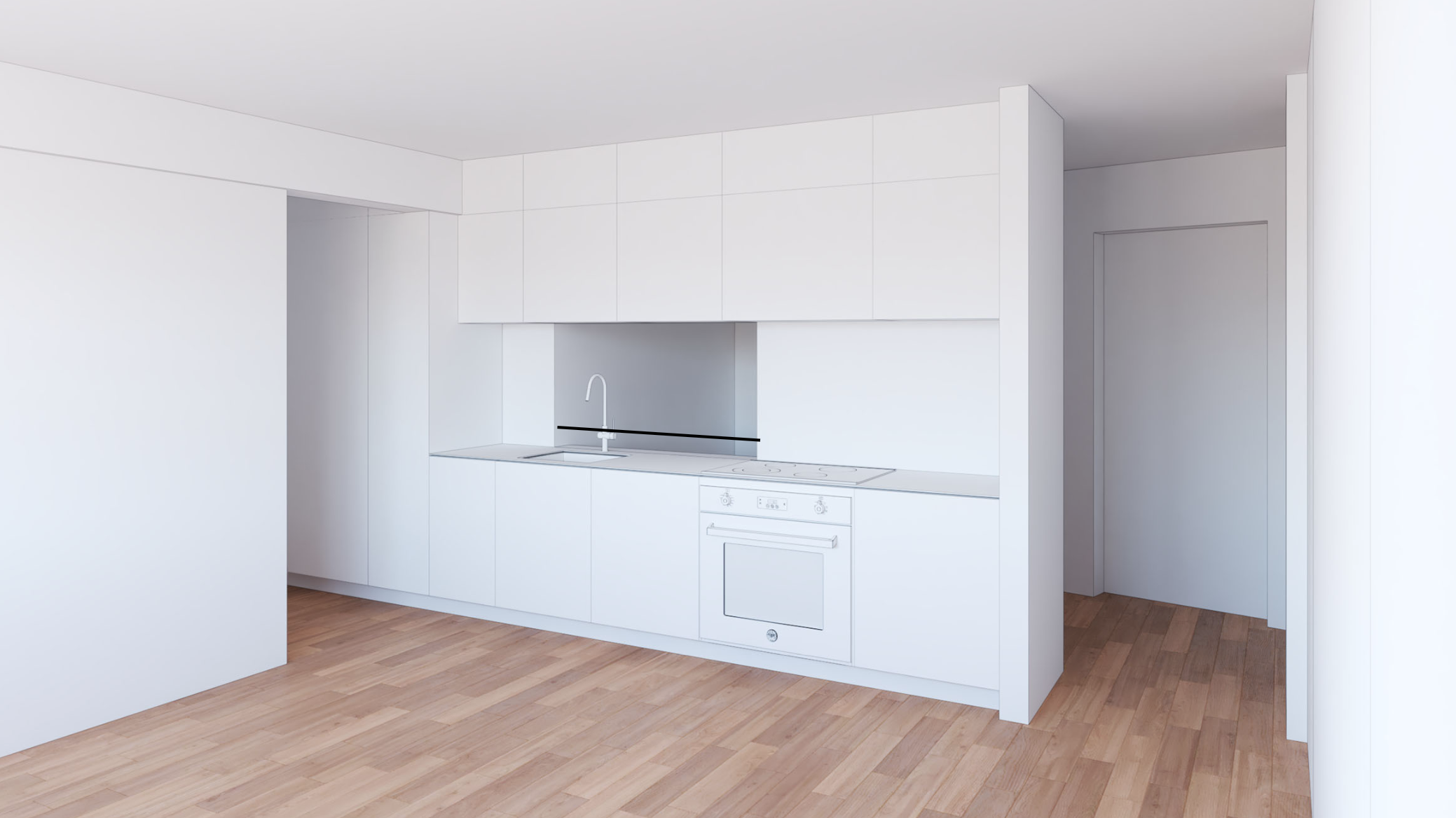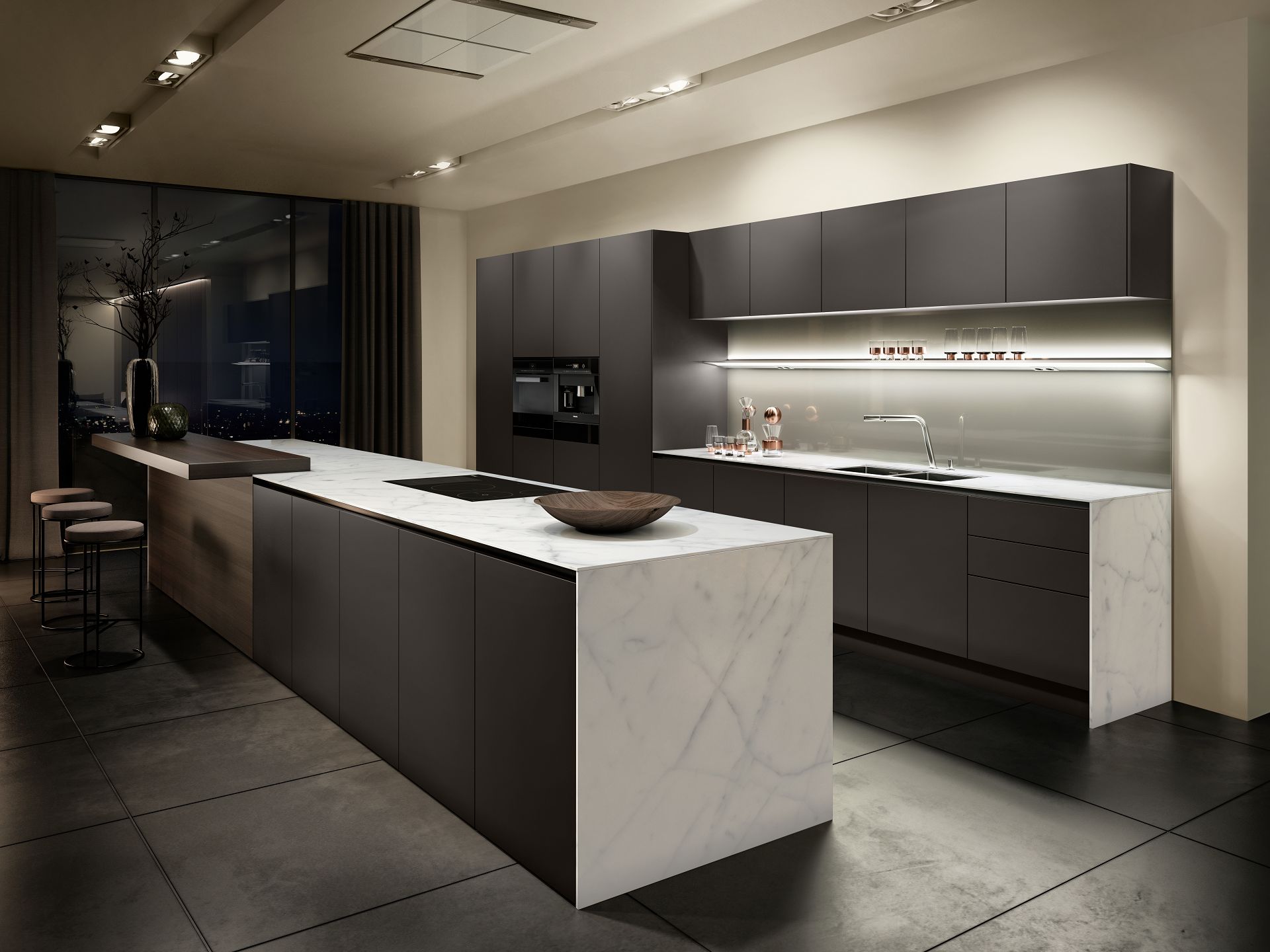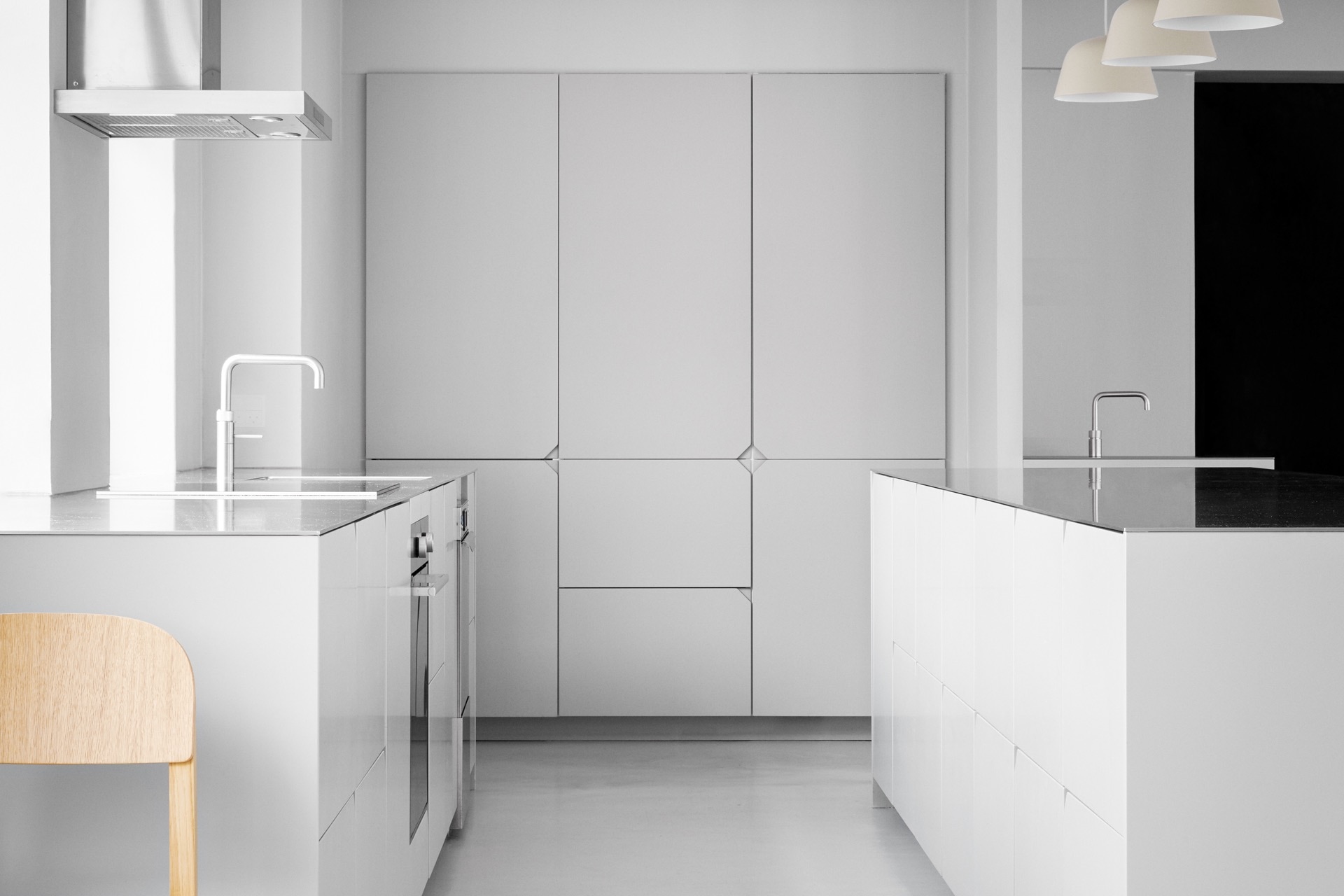Cabinets Are Expensive

When we left off, I had been asked to choose a layout. There was the more conservative option — leaving the kitchen in place and slightly reorganizing — versus the bolder option of creating an office with a linear kitchen in my living room. After some consideration, I decided to go down the linear kitchen route.
The area where the new cabinets go is already dead space: I can’t put anything there because it would block access to the rest of my apartment and the kitchen. If I can fill that in, and also get a small room for a desk or my piano, that seems like a great idea. It also made a lot more sense when I realized it was possible to get rid of the island-cum-dining table. I should probably get a smaller dining table at some point, but in any case, that’s much more flexible when it’s not fixed as a set of cabinets.
Speaking of which, the next choice I have to make is where to get the cabinets.
The cabinet choice is perhaps the most vexed question of the whole project. I’m pretty adamant about getting nice appliances, so I’m taking as a given that I’ll spend more there than most people would. Construction is more or less a fixed cost: either the plumbing is successfully configured or it’s not. As far as I’m aware, there’s no “luxury plumbing” I could buy to go in the walls.

If money were no object, I’d get cabinets from one of the high-end German manufacturers. But it wasn’t clear exactly how much these companies charged for their products. When I went to visit places like Poggenpohl and SieMatic in the pre-architect days, they more or less refused to give me prices without fairly detailed architectural drawings. It seemed within the realm of possibility that — especially since it’s such a small kitchen — I might be able to squeeze a fancy German kitchen into my big-but-not-really-that-big roughly $40,000 budget.
The rough estimates that my architects got were surprising. Some were more than I would’ve imagined. Others were still outside my budget, but a lot more reasonable than I would’ve guessed.
The two most expensive were Bulthaup — at a whopping $55,000 — and Poggenpohl. Money aside, Poggenpohl was my top pick. They are so expensive that projects have a hard floor of $50,000, and it’s hard to imagine that I’d want to get the absolute cheapest, most basic option they offer. They’re so expensive the Poggenpohl team didn’t even want to see the drawings to contemplate giving a more affordable bid.
My second choice, SieMatic, came in lower than I would’ve guessed, at around $25,000. My architects also looked at Leicht, which came in around the same price.

Zooming out a little, the cabinets more or less need to cost about $10,000. With my $40,000 budget, about $10,000 will go to appliances, and the architects are working with a $10,000 figure for all the construction costs, like moving the plumbing and moving walls. With $10,000 spent on cabinets, that leaves a further $10,000 for other finishes like worktops and lighting.
Thus: the final option on the table is the “IKEA hack.” In particular, my architects have proposed going with Reform, a company out of Copenhagen that offers “designer” fronts for IKEA cabinet shells. That looks like it will fall somewhere closer to $7500 for the options that looked the most promising to me. I should get a quote from Space Theory in the next few days as well.

In a way, I find this comforting. I worry that I’m spending way, way too much money on fancy appliances. But even if I go down to more “conventional” choices for my oven or refrigerator, I still wouldn’t be able to afford one of my fancy German cabinet options. It seems possible I might even get the project in under $40,000, which could leave some latitude for buying some extra fancy lighting or laundry appliances.
Once I have this narrowed down a bit, there will be more renders to finalize the design, and then it comes down to scheduling. Finding a contractor will depend a lot on the point at which I can take delivery of the cabinets at the core of the design.